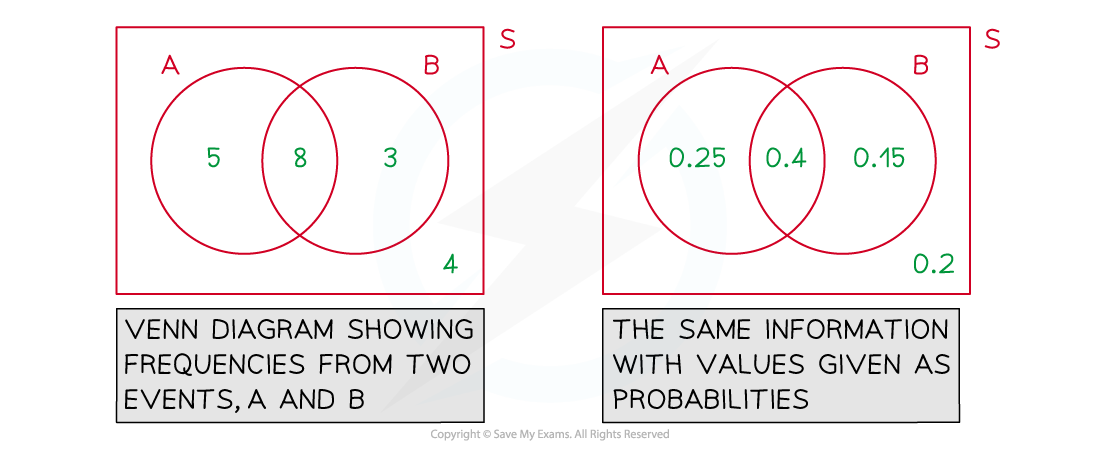- 翰林提供学术活动、国际课程、科研项目一站式留学背景提升服务!
- 400 888 0080
CIE A Level Maths: Probability & Statistics 1复习笔记2.1.2 Venn Diagrams
Venn Diagrams
What is a Venn diagram?
- A Venn diagram is a way to illustrate events and are particularly useful when outcomes overlap
- Venn diagrams are mostly used for 2 or 3 events
- A Venn diagram consists of a box (rectangle) and a bubble (circle/ellipse) for each event
- Bubbles may or may not overlap
- Bubble(s) is not a technical term, but we like it!
- The box represents all outcomes
 There is no standardised symbol for this purpose
There is no standardised symbol for this purpose
- Bubbles are labelled with their event name (A, B, etc)
- The numbers inside a Venn diagram (there should be one in each region) will represent either a frequency or a probability
- In the case of probabilities being shown, all values should total 1

What do the different regions and bubbles overlapping mean on a Venn diagram?
- This will depend on how many events there are and how the outcomes overlap
- Venn diagrams show ‘AND’ and ‘OR’ statements easily

Worked Example

Exam Tip
- The rectangle in a Venn diagram is a key part of the diagram
- it represents all possible outcomes of the experiment
- the bubbles merely represent the events we are particularly interested in
- there is usually a few possibilities that fall outside of these events so this would be the section outside the bubbles but inside the rectangle
- A quick ‘mini-Venn’ diagram shading the parts required to answer the question can be useful rather than always drawing a full Venn diagram with all its values
转载自savemyexams

最新发布
© 2025. All Rights Reserved. 沪ICP备2023009024号-1









